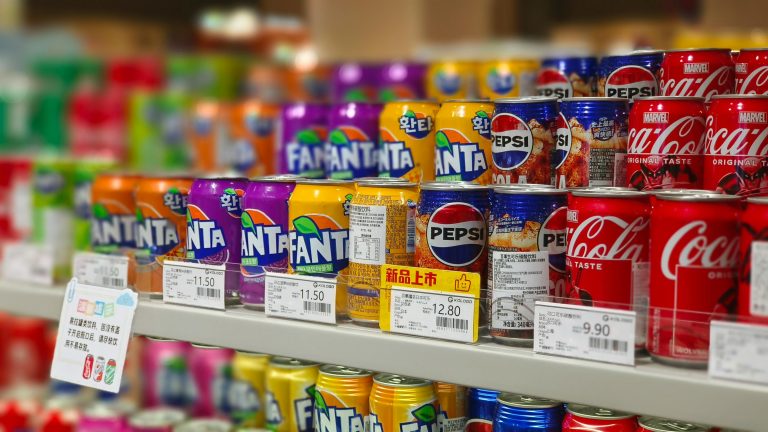SKU Management: Navigating Expiries and Pricing Trends
In today’s incredibly competitive retail environment, the management of a product’s lifecycle has become a critical factor in determining success or failure. The high stakes of staying relevant and profitable have never been higher. With the emergence and adoption of SKU (Stock Keeping Unit) management technologies, the traditional methods by which brands and retailers have approached inventory management have been revolutionized, shifting the landscape entirely. This technological advancement has led to two particularly critical aspects gaining prominence: the effective management of product expiration dates and the integration of forward-looking, predictive pricing strategies.
Effective expiration management ensures that products are sold or utilized before they become obsolete or expire, reducing waste and maximizing profit. Meanwhile, predictive pricing strategies use data analytics to adjust prices dynamically in response to market demand, competition, and other external factors, ensuring that the product pricing is always optimized for both sales volume and profit margins.
About 17% of global food production may go wasted, according to the UN Environment Programme’s (UNEP) Food Waste Index Report 2021, with 61% of this waste coming from households, 26% from food service and 13% from retail.
This comprehensive guide will delve deeper into how these emerging trends are not just reshaping the approach to inventory management but are setting new benchmarks for efficiency and effectiveness. We’ll explore the intricacies of each trend, offering insights into how they can be integrated into your business operations. By understanding and leveraging these trends, you can curate a dynamic product portfolio that not only meets the demands of today’s market but positions you several steps ahead of your competitors, ensuring your brand’s longevity and success in the retail landscape.
What Is SKU Management and Why Does It Matter?
The lifeblood of any successful retailer is deeply rooted in its SKU (Stock Keeping Unit) management practices. SKU, a unique code assigned to each product, plays a crucial role in tracking inventory across various sales channels. This code is not just a random assortment of numbers and letters; it encapsulates critical product attributes such as color, size, material, and packaging, providing a comprehensive overview of inventory that is essential for operational efficiency.
Efficient SKU management stands as the backbone of a coherent and effective inventory system. It enables businesses to maintain a meticulous record of stock levels, monitor sales trends, and analyze product performance across different demographics and regions. This in-depth understanding of inventory dynamics is pivotal for making informed purchasing decisions, setting optimal pricing strategies, and planning promotional activities that resonate with target audiences.
Moreover, a streamlined and well-organized SKU system contributes significantly to operational excellence. It facilitates quicker restocking processes by identifying which items are running low and need replenishment, thus preventing stockouts that could potentially harm sales and customer satisfaction. By ensuring that popular products are always available, retailers can offer better customer service, enhance the shopping experience, and foster customer loyalty.
In addition to operational benefits, effective SKU management also has a direct impact on a retailer’s bottom line. By aligning inventory levels with demand, businesses can minimize excess stock and reduce carrying costs, thereby improving overall profitability. It also supports a more strategic approach to markdowns and discounts, allowing retailers to maximize margins while clearing out slow-moving items.
In conclusion, the strategic importance of SKU management in the retail sector cannot be overstated. It is a critical element that supports inventory accuracy, operational efficiency, customer satisfaction, and ultimately, higher profits. As such, investing in robust SKU management systems and practices is essential for retailers aiming to thrive in the competitive market landscape.
The Risk of Expiries Becoming Sales Loss
Expiration management is increasingly becoming a vital component of inventory control, especially in industries dealing with perishable items and pharmaceuticals. The importance of managing expiration dates has been magnified due to stricter regulations surrounding product shelf life and the public’s heightened expectations for quality. In this context, the presence of expired products on shelves poses a significantly elevated threat.
Expired stock represents not only a financial loss but also a serious risk to a brand’s reputation, potentially causing irreparable damage. For consumers, the discovery of an expired product is a clear indication of negligence on the part of the retailer or brand, undermining trust and loyalty. This situation is exacerbated in the digital age, where social media platforms offer consumers an immediate and wide-reaching outlet to express their dissatisfaction. The negative impact of just one incident involving expired goods can be amplified through social media, leading to a catastrophic ripple effect that can tarnish a brand’s image.
Furthermore, the challenges of expiration management are compounded by the complexities of supply chains and varying shelf lives of products, making it imperative for companies to invest in robust inventory management systems. These systems must not only track expiration dates accurately but also provide actionable insights to prevent the stocking of expired goods. Implementing such technologies can be a game-changer, enabling businesses to maintain high standards of product quality, compliance with regulations, and ultimately, customer satisfaction.
Predictive Pricing: The Ultimate Goal for Retail Profits
Predictive pricing is a sophisticated technique that leverages data analysis to accurately forecast market demand and refine pricing strategies for maximum efficiency. This approach involves the meticulous integration of historical sales data, comprehensive trend analysis, and the consideration of external factors such as weather patterns or geopolitical events, enabling retailers to pinpoint the most advantageous pricing points for their products.
The advantages of predictive pricing stretch far beyond simply boosting profit margins. It plays a pivotal role in inventory management, particularly through its synergy with expiry management systems. This allows retailers to strategically move stock before it becomes unsellable, thereby reducing waste and maximizing revenue from existing inventory. Moreover, the ability to make quick and informed price adjustments empowers retailers to maintain a competitive edge in a fiercely competitive market. In an era where consumers can effortlessly compare prices online with just a few clicks, staying ahead with real-time pricing adjustments is crucial.
Furthermore, predictive pricing facilitates a more personalized shopping experience. By analyzing customer purchasing habits and preferences, retailers can tailor their pricing strategies to meet the expectations and needs of different customer segments. This not only enhances customer satisfaction but also fosters loyalty, as shoppers are more likely to return to stores that offer them the most value for their money.
In conclusion, predictive pricing is an invaluable tool for retailers, enabling them to optimize pricing strategies, manage inventory more effectively, and stay competitive in a rapidly changing market environment. It represents a blend of data science and strategic marketing, offering a forward-looking approach to pricing that can significantly impact a retailer’s bottom line.
Best Practices in SKU Management
To leverage these trends effectively, it is crucial that brands and retailers adopt best practices in SKU management. Here are some actionable strategies to streamline your SKU processes:
- Standardize Your SKUs: Implement a consistent SKU naming convention to make tracking and identification more efficient. This aids in quick data analysis and streamlined inventory management.
- Regular Audits and Reporting: Frequent shelf audits help to keep your stock levels accurate and identify expiring products early. Integrate reporting tools that provide a real-time overview of your inventory health.
- Invest in Analytics: Use data analytics to predict sales patterns and identify opportunities for promotion. Tools like Shelvz’s retail execution software can do wonders for proactive price and expiry management.
- Collaborative Forecasting: Work closely with suppliers to factor in their lead times, and anticipate demand more accurately.
- Implement Agile Inventory Practices: Be prepared to adapt quickly to trends and market shifts. A flexible inventory system can help reduce losses from obsolete or expiring stock.
The Power of Returns and Promotions
Returns management is an essential, though frequently neglected, element of SKU (Stock Keeping Unit) control that plays a critical role in the overall health of a business’s inventory and profitability. By effectively categorizing returns and processing them in a timely and efficient manner, businesses can prevent these returned items from turning into significant sales losses. This requires a systematic approach to handling returns, including identifying the reasons for returns, which can also offer valuable insights for future product improvements.
On the other side of the spectrum, strategically planned promotions can serve as a proactive measure to move stock, particularly those nearing their expiry dates or end of season, thus minimizing the need for markdowns. Moreover, the utilization of predictive pricing strategies ensures that these promotions are not only effective in reducing excess inventory but also remain profitable. By analyzing past sales data and current market trends, businesses can set optimal price points that attract customers while maintaining a healthy margin.
In summary, a comprehensive approach to returns management combined with well-thought-out promotional strategies and predictive pricing can significantly enhance inventory control, reduce losses, and improve profitability. This holistic view of SKU management underscores the importance of integrating returns processing, promotional planning, and pricing strategies into the broader inventory management practices.
The Role of Technology
Sophisticated retail execution software, such as Shelvz, are at the forefront of modern SKU management. These platforms offer a suite of tools to help retailers manage their inventory smarter. From shelf audits and reporting, to predictive analytics and real-time pricing management, these systems can be the difference between thriving and merely surviving in the retail arena.
Utilizing technology not only streamlines current operations but also future-proofs your business against upcoming challenges. Artificial intelligence and machine learning are predicted to be the next disruptors in retail management. Early adopters will undoubtedly gain a significant edge over those who lag behind.
Preparing for the Future
SKU management is evolving rapidly, and the stakes have never been higher. By understanding and leveraging the trends in expiry management and predictive pricing, retailers can ensure a responsive and dynamic inventory system that minimizes losses and maximizes profitability.
Investing in the right technology, like the all-encompassing Shelvz retail execution software, is not just a smart move—it’s an essential one. It provides the visibility and control over your inventory that is needed to thrive in an increasingly complex and competitive market.
For brands and retailers willing to adapt and incorporate these trends into their SKU management practices, the future is bright. It’s a future where strategically managed inventory is not just a support function, but a competitive advantage that leads to sustained growth and success.
Are you prepared to take the next step in the evolution of your SKU management? The time to act is now. The future starts today.



